Hugh Carmichael
by Victoria JL Fisher
The quartz crystal microbalance—an instrument to measure tiny masses very precisely—was developed between 1947 and 1949 by Hugh Carmichael, a physicist who had been working at the Montreal nuclear research laboratories from 1942 and since 1946 at Canada’s largely civilian nuclear research laboratories at Chalk River, Ontario. Although he had had no experience with microbalances, he had previously developed an extremely sensitive quartz-fibre electroscope intended for personal radiation detection and monitoring.
The microbalance was built on existing quartz-fibre balance technology, which had been experimented before but had not yet dominated over ‘knife edge’ technologies where balance beams were balanced on a sharp edge, rather than suspended by a fibre. A key advance in Carmichael’s design was actually the housing: instead of having the balance inside a large open box where small differences in air temperature might cause convection currents that would disturb the balance beam, Carmichael’s balance isolated the beam in a narrow slot within a solid metal block. This successfully isolated the beam from both air currents and thermal interference in the environment.
Carmichael initially made two prototypes. In 1949, thirteen more were manufactured at Chalk River’s in-house workshops to provide the British and Canadian nuclear research facilities with the microbalances necessary. Hilger & Watts, the British instrument company, was granted the license to produce a commercial version, Mark II, which include the major improvement of a projection readout system that enabled a user to read the balance on the same side as operating it. This was launched at the British Instrument Industries’ Exhibition in the summer of 1953. It is not clear how widely it was used in industry.
This balance is labelled #14, making it one of the fifteen made on-site at Chalk River. It was used for chemical studies of transuranic elements—elements beyond uranium on the periodic table.
Timeline
1942 - Hugh Carmichael is working at Canada's wartime nuclear research laboratories in Montreal.
1946 - Carmichael moves to the newly constructed nuclear research laboratories at Chalk River, Ontario.
before 1949 - Carmichael develops the Mark I precision microbalance. 15 prototypes of the microbalance are manufactured at Chalk River for immediate use.
1953 - The Mark II Hilger & Watt's microbalance is launched at the British Instrument Industries’ Exhibition.
Selected Sources
Carmichael, H. “Design and Performance of a Fused Silica Microbalance” Canada Journal of Physics Vol 30 (1952): 524-555
Hurst, D.G. “Overview of Nuclear Research and Development” pgs 1-33 in Canada Enters the Nuclear Age: A Technical History of Atomic Energy of Canada Limited as Seen from Its Research Laboratories (McGill-Queen’s University Press, 1997)
“British Instrument Industries’ Exhibition” pg 967-984 in The Chemical Age 27 June 1953): 979
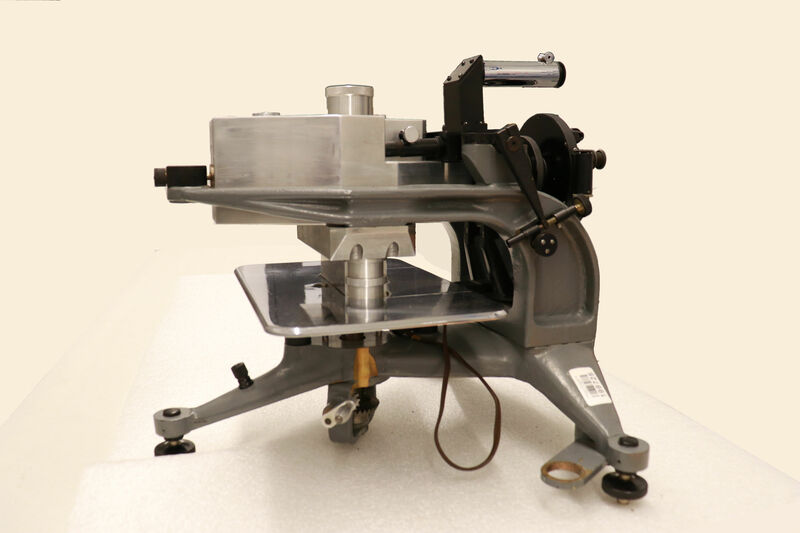
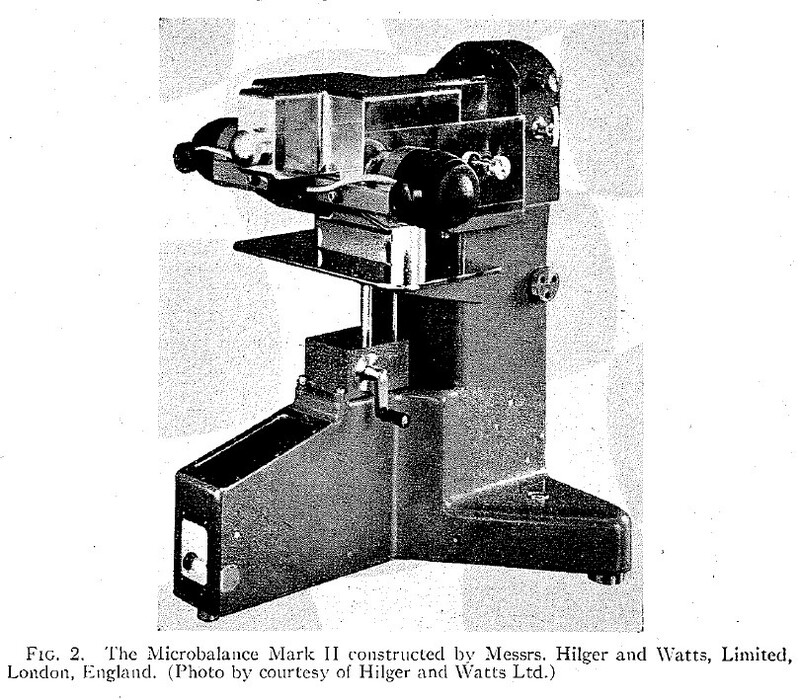
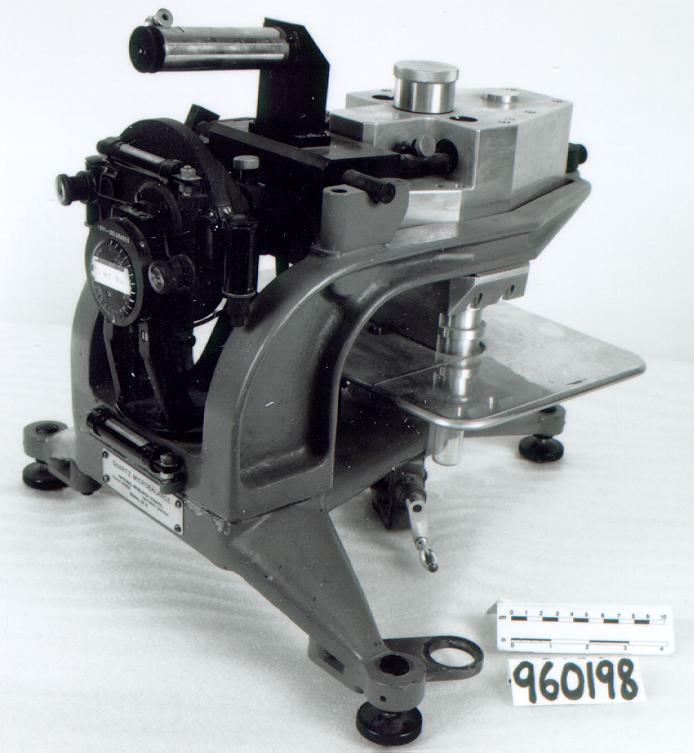
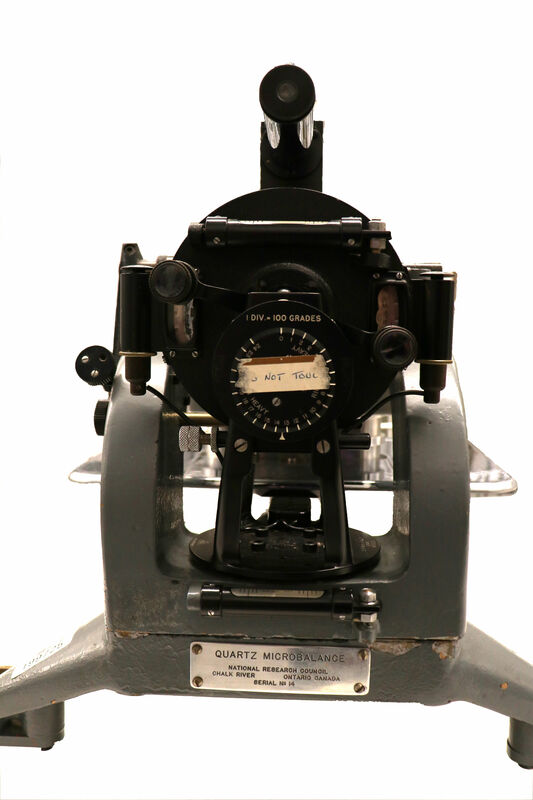
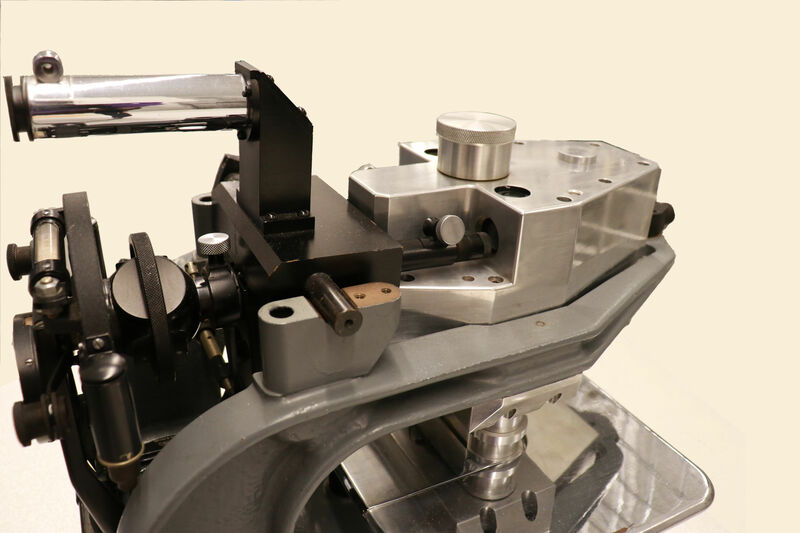
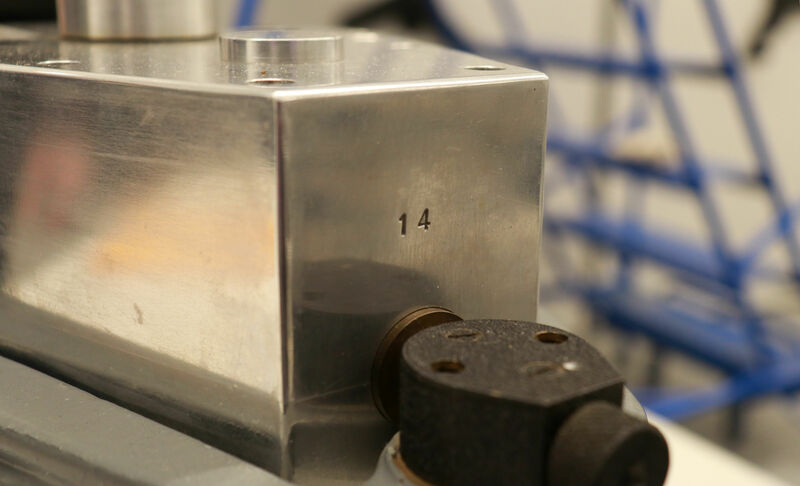
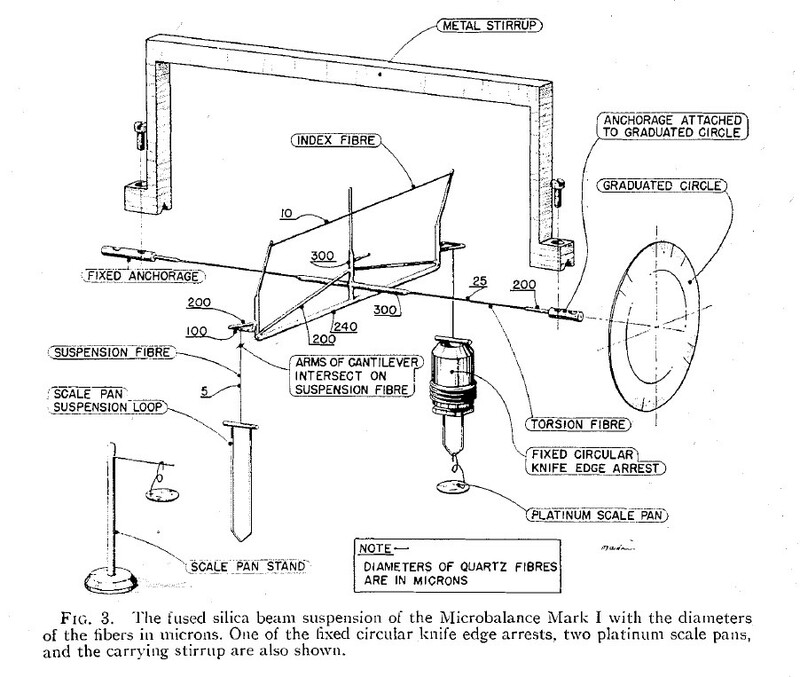
 Microbalance
Microbalance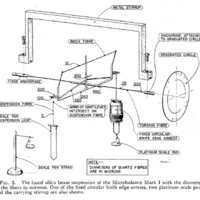 Hugh Carmichael
Hugh Carmichael